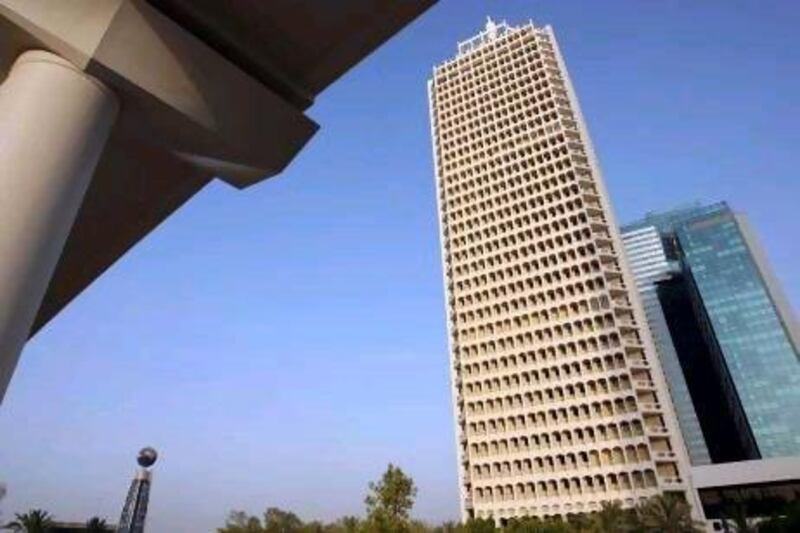DUBAI // The British architect John Harris thought his work in Dubai was done after he laid out the first master plan for the city and saw his ideas become reality in the 1960s.
Mr Harris was at the airport preparing to leave when he felt a hand on his shoulder and a voice said: "Sheikh Rashid wants to see you."
The subject that Sheikh Rashid bin Saeed, then Ruler of Dubai, wished to discuss was a new commission - the World Trade Centre.
Mr Harris and his practice went on to design the tower, Dubai's first, which was to become an architectural symbol. He spent the next seven years working on the project.
The 149-metre tall, 39-storey office tower was inaugurated by Queen Elizabeth in 1979 and was the tallest building in the Arab world until the completion of the Burj Al Arab 20 years later.
When the trade centre was built, it rose up in splendid isolation above the surrounding desert. It has since been dwarfed by many other buildings nearby and across the city.
Its fame is reflected in the fact that it is pictured on the Dh100 banknote.
"In those days it was felt to be in the middle of nowhere, and that people would be unlikely to move their offices there because it was too far from Deira and Bur Dubai, where the real action was," says Guy Guillemard, the centre's first employee.
"But we proved them wrong. I felt that regional offices, as opposed to those that were dealing with the souq or trade around the creek, would soon appreciate the benefits of superior office space.
"Initially it seemed bizarre to be building such a tall structure in an area of no density, let alone low density. There were almost no other buildings around it.
"But I bowed to the recognition by the Al Maktoum family of the power of symbols, and I think the tower was a symbol of international standing and intentions.
"Also, it was great to provide a viewing point. It was the place where people would bring their visiting chairman, and that sort of thing, and take a look at the emerging city."
Mr Guillemard arrived at the trade centre in 1979 and spent a year as head of marketing and exhibitions before becoming general manager and a director.
He left after 10 years and is now chief executive of Signature Clubs International, which runs the Capital Club at the Dubai International Financial Centre.
"Our mission at the trade centre was very much about marketing Dubai internationally," Mr Guillemard says. "It may sound weird now because Dubai is so well known, but in those days very few people had heard about Dubai.
"So our work in doing missions overseas and trying to attract trade shows to Dubai, and regional offices and trade offices to base themselves here was very much part of the plan.
"It wasn't a case of sitting back and trying to let the office space to the local market, it was about creating new relationships, bringing people in and projecting Dubai as the logical place to be."
The tower's first tenant was BP, and others who took space in the early years included Ernst & Young, IBM and Amro bank.
Today the building is home to the Dubai Financial Market, a number of consulates, and companies such as Federal Express, General Motors, Johnson & Johnson, MasterCard and Sony.
"Our strategy was to try to make it comparable with a top-quality office building you'd find anywhere else in the world," Mr Guillemard says.
"So I negotiated the first in-building post office, we had courier offices and on-site banking, and we had not only a staff canteen but one or two nice restaurants. We introduced serviced offices ahead of Regus and the other big players, and we tried to provide a high standard of management, welcome and assistance."
Mr Harris, who recalled the scene at the airport in later life, died in 2008, aged 88.
His legacy, and in particular the tower, is appreciated by today's architects, who admire the way he incorporated elements of traditional Islamic architecture.
"This is one of my favourite buildings," says Ahmed Al Ali, an Emirati and a principal of X-Architects in Dubai. "It's quite beautiful because it is really strict modernist architecture, but at the same time it has another layer of respect for the place itself.
"I really love it. Even though it was built in the '70s it should be looked at as an example for the future."
Compare Dubai World Trade Centre with its modern counterparts
View Larger Map






